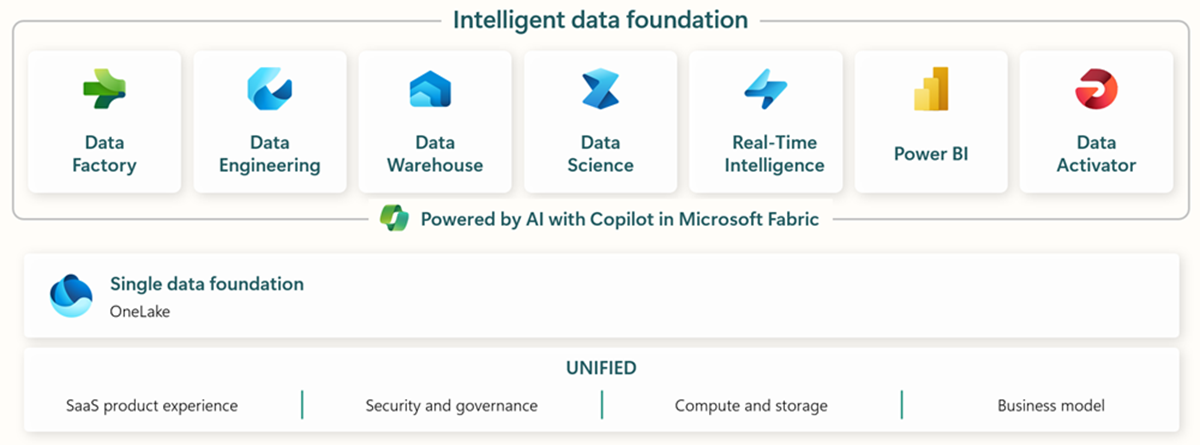Microsoft Fabric vs Snowflake – A Comparison of Features and Performance

Microsoft Fabric vs Snowflake – Key Features and Performance Comparison: Businesses often choose between Microsoft Fabric and Snowflake when selecting a cloud data platform. This article explores their architecture, performance, and security, helping you decide what’s best for your data strategy.
Microsoft Fabric offers a complete set of integrated services that boost development and simplify data pipelines. In contrast, Snowflake provides a flexible, cloud-native architecture known for its scalability and ease of use, making it ideal for companies prioritising efficiency.
This article will break down the features and compliance of these platforms, offering insights for tech enthusiasts and business leaders alike. Join us as we identify the platform that best fits your organisation’s goals.
Architecture Showdown
Choosing the right data platform is crucial in today’s tech landscape. Microsoft Fabric and Snowflake, both leaders in the field, offer distinct architectural benefits for businesses.
-
Distributed Computing vs. Cloud-Agnostic: Microsoft Fabric uses a distributed computing model integrated with Microsoft’s suite, ideal for handling large data volumes within its infrastructure. Snowflake, on the other hand, is cloud-agnostic, offering flexibility across various cloud services. This appeals to businesses seeking broader operational scope.
-
AI Integration and Microsoft Tools: Key to Microsoft Fabric is its AI integration, which enhances capabilities and syncs with tools like Power BI and Microsoft Teams. This boosts collaboration and enables swift data insights.
-
Storage-Compute Separation: Snowflake excels with its unique storage-compute separation, allowing independent, elastic scaling to meet varying computational and storage needs. This helps businesses optimise operations and resource use effectively.
Ultimately, while both Microsoft Fabric and Snowflake are tailored for modern data challenges, they differ in integration and scaling flexibility. Fabric is best for those rooted in Microsoft’s ecosystem, while Snowflake offers adaptable scaling across cloud platforms. Next, we’ll explore these features further in the Feature Comparison section.
Feature Comparison
Navigating data platforms requires understanding their features. This section highlights the integration, AI support, data ingestion, and processing efficiency of Microsoft Fabric and Snowflake.
-
Integration Capabilities: Microsoft Fabric excels in seamless integration with Microsoft 365 and Dynamics 365, utilising Azure’s ecosystem. Snowflake offers multi-cloud integration across AWS, Azure, and Google Cloud, suiting diverse business needs.
-
AI and Machine Learning Support: Microsoft Fabric integrates with Azure AI, enhancing machine learning model management. Snowflake supports AI and ML via TensorFlow and DataRobot but requires more expertise without in-platform tools.
-
Data Ingestion: Both platforms excel in data ingestion. Microsoft Fabric handles varied data formats, ideal for industries like media and healthcare. Snowflake’s design facilitates smooth data loading, perfect for real-time analytics.
-
Concurrent Management: Microsoft Fabric uses Azure’s load balancing for efficient resource use during peaks. Snowflake excels in handling concurrent queries, offering superior scalability by separating storage and compute.
Both Microsoft Fabric and Snowflake offer compelling features. As we move to Performance and Scalability, understanding these features helps determine the best platform for your business needs.
Performance and Scalability
In the realm of cloud-based data services, performance and scalability are crucial for businesses needing fast processing and growth flexibility. Microsoft Fabric and Snowflake both shine, though differently, in these areas.
Microsoft Fabric harnesses Azure Cloud’s power, using parallel processing to excel in handling simultaneous operations. This makes it ideal for businesses prioritising fast data processing, especially under transactional pressures.
In contrast, Snowflake offers dynamic scaling with virtual warehouses. This allows businesses to adjust resources instantly to meet fluctuating demand, handling various queries efficiently without resource conflicts. Snowflake’s architecture excels in environments with changing workloads.
Both platforms perform impressively under real-world conditions. Microsoft Fabric minimises query delays even when workloads are heavy, thanks to Azure’s capabilities. Snowflake, with its separation of storage and computing, provides nearly linear scaling, boosting performance with data-intensive tasks.
Choosing between Microsoft Fabric’s Azure-driven parallelism and Snowflake’s flexible scalability requires understanding each platform’s strengths. Both offer robust solutions to support data efficiency and growth, setting the stage for discussions on security and compliance.
Security and Compliance
Security and compliance are crucial in the cloud world for secure data management. Microsoft Fabric and Snowflake both emphasise strong protective measures using advanced technology to keep user data secure while ensuring regulatory compliance.
Microsoft Fabric uses Azure’s built-in security measures, implementing extensive encryption to protect data at rest and in transit. It employs machine learning for threat detection, actively guarding against potential threats.
Snowflake utilises its unique security tailored for its cloud architecture. It supports encryption, multi-factor authentication, and thorough auditing to monitor user activities effectively.
In terms of compliance, Microsoft Fabric integrates with Azure Policy and Blueprints to simplify meeting industry regulations. Snowflake supports major certifications like HIPAA and GDPR, providing tools for hassle-free audits, minimising legal risks.
Both platforms offer secure spaces for data utilisation. Next, we will explore how Microsoft Fabric and Snowflake apply their capabilities in real-world applications to harness the power of big data.
Use Cases and Real-world Applications
Microsoft Fabric stands out in modern data applications, offering a range of real-world solutions.
-
Onyx Data’s Strategic Development: Onyx Data aids businesses in creating dynamic data strategies with Microsoft Fabric. This tool’s flexibility and comprehensive analytics enhance decision-making and operational efficiency.
-
Financial Services Scalability: Financial services leverage Microsoft Fabric’s scalability to manage high-frequency transactions efficiently. Its data partitioning ensures seamless operations and zero downtime for critical financial processes.
-
AI in Education: Educational institutions utilise Microsoft Fabric for AI integration and advanced data analytics. This supports customised learning experiences, improves student monitoring, and boosts teaching methods.
Microsoft Fabric’s adaptable architecture caters to various data applications, extending its use across multiple industries. It serves as a foundational element for next-generation data management, turning possibilities into business realities.
Through strategic development and practical implementation, Microsoft Fabric emerges as an invaluable tool in today’s digital landscape.
Conclusion
In comparing “Microsoft Fabric vs Snowflake,” it’s evident both platforms have unique strengths for data management. Microsoft Fabric is well-integrated with the Microsoft ecosystem, making it ideal for users within this suite. It offers a seamless data warehousing and analytics experience.
Conversely, Snowflake excels in performance and scalability, suited for businesses focused on flexibility and managing large data volumes. Its multi-cluster architecture efficiently handles resources in varied environments.
Microsoft Fabric stands out with strong security and compliance features, while Snowflake tailors its offerings to handle diverse data sets across industries.
Choosing between Microsoft Fabric and Snowflake depends on organisational needs and goals. Do you stick with Microsoft’s reliable environment, or opt for Snowflake’s performance power?
Consider if a hybrid solution could bridge the gap, or if new technologies will alter the data management space. The future holds endless data opportunities to explore.
About Onyx Data
Onyx Data is a leading consultancy and training provider specialising in advanced data analytics and AI integration, with a key focus on Microsoft technologies such as Power BI and Microsoft Fabric.
Our expertise matters because it empowers businesses to transform their raw data into actionable insights, enhancing their performance and facilitating smarter decision-making across industries.
Ready to unlock the full potential of your data? Let Onyx Data guide your transformation. Learn more at onyxdata.co.uk.






